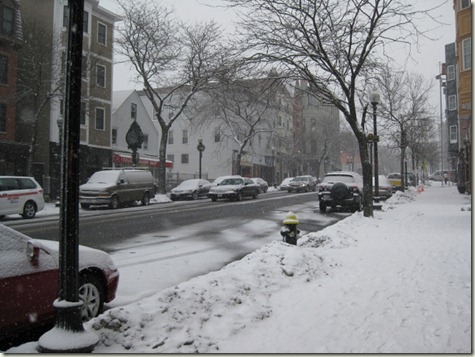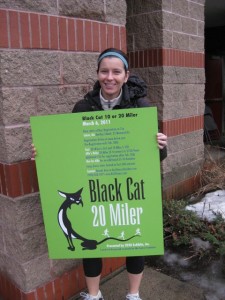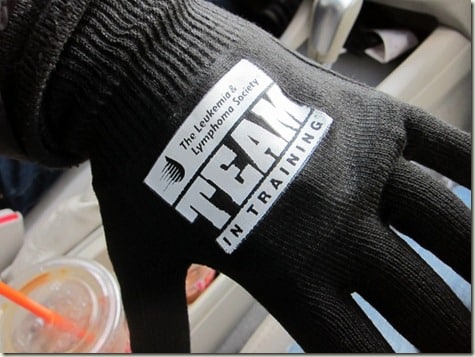I Heart Induction Cooking Event
Last night I headed downtown after work for a date with Electrolux at Desiron, a gorgeous furniture gallery in SoHo.
 While I normally tend to be more conservative in my interior design tastes, I was immediately taken aback by the gorgeous pieces when I walked through the doors. The colors, textures, and finishes were like a warm breath of fresh air as I found refuge from the cold winter air. I secretly wanted to spend the next hour upstairs, exploring the furniture, but I quickly headed downstairs for an hour of cooking fun with Johnny Iuzzini and Anne Burrell instead.
While I normally tend to be more conservative in my interior design tastes, I was immediately taken aback by the gorgeous pieces when I walked through the doors. The colors, textures, and finishes were like a warm breath of fresh air as I found refuge from the cold winter air. I secretly wanted to spend the next hour upstairs, exploring the furniture, but I quickly headed downstairs for an hour of cooking fun with Johnny Iuzzini and Anne Burrell instead.
 The event, which kicked off Electrolux and Frigidaire’s “I Heart Induction” campaign, was themed around Valentine’s Day and highlighted the many benefits of induction cooking from both a chef and a pastry chef’s point of view. Induction heating, which has been around for years, is still a mystery to many. Induction cooking uses induction heating to directly heat the pot instead of a heat transfer from gas or electric burners. In order for induction cooking to work, the pot used must be made of magnetic material so that the heat may transfer. Therefore, cast iron pans work wonderfully but aluminum can’t work. Simply said, it’s the magnetic reaction which creates the heat.
The event, which kicked off Electrolux and Frigidaire’s “I Heart Induction” campaign, was themed around Valentine’s Day and highlighted the many benefits of induction cooking from both a chef and a pastry chef’s point of view. Induction heating, which has been around for years, is still a mystery to many. Induction cooking uses induction heating to directly heat the pot instead of a heat transfer from gas or electric burners. In order for induction cooking to work, the pot used must be made of magnetic material so that the heat may transfer. Therefore, cast iron pans work wonderfully but aluminum can’t work. Simply said, it’s the magnetic reaction which creates the heat.
Benefits
- Sleek like electric but cooks like gas
- Can touch it without risk of getting burned.
- 70% more energy efficient than gas and 20% more energy efficient than electric
- Responsive and even cooking
- Can boil water in 90 seconds

While their cooking styles and personalities were very different, both showed a passion for food and induction cooking that was contagious. 
The duo whipped up a delicious Valentine’s Day meal including a fennel and grapefruit salad, spaghetti Bolognese, and a poached pear dessert. While they each prepared the dish, they highlighted some of the many benefits of using induction cooking over the traditional gas or electric stove, common in most homes.


 The best part about induction cooking is that it doesn’t have to cost thousands. Frigidaire makes a portable induction burner which is perfect as a more affordable option. My father actually gave Bo and I one last year and we love it for quick and precise heat. It’s only $199.00 and can be easily stored in even the smallest of kitchens!
The best part about induction cooking is that it doesn’t have to cost thousands. Frigidaire makes a portable induction burner which is perfect as a more affordable option. My father actually gave Bo and I one last year and we love it for quick and precise heat. It’s only $199.00 and can be easily stored in even the smallest of kitchens!

Question: What’s your favorite type of heat? Gas, electric, or induction?
Marathons+Moderation Guest Post #31: Training for a Marathon During Winter
This week’s Marathon+Moderation guest post comes from Tina! A year ago, long before Cross Fit came into her life, Tina was pounding the asphalt or treadmill daily, training for her first marathon. Instead of signing up for my own Spring marathon to learn how to battle the cold weather during long runs, I figured we could all learn from Tina’s experience. I hope you all enjoy and please, keep the Marathon+Moderation guest post requests coming!
I used to dread running outside in the cold weather, but when I trained for my first marathon in November, December, and January in Boston, I had no other choice. Once I learned how to deal with the cold and dress properly for the conditions, I’ve actually started to enjoy winter running! Here’s how I get myself out the door and running when the cold temperatures arrive!
Dress In Layers
When getting dressed for a winter run, I like to keep the “25 Degree Rule” in mind. Because your body heats up as you run, take the outside temperature, add 25 degrees to it, and dress for that temperature. So, for instance, if it’s 40 degrees outside, dress for 65 degree weather. It might seems chilly at the start of your run, but you’ll definitely warm up!
For winter running, I generally start with a thin layer of ‘wicking’ clothing (usually a short sleeve shirt) and then add a breathable jacket or long-sleeve shirt that protects me against the cold and wind, but still releases heat so I don’t overheat. I avoid wearing clothing made out of cotton because it holds in moisture, which leaves me wet and freezing.
Dressing in layers is important because it allows me to remove pieces of clothing as my body begins to heat up, so I make sure they are easy to take off. I like jackets and shirts with long sleeves, which make them quick and easy to tie around my waist during a run. I also wear a jacket or vest with pockets, so I can store my gloves and hat if they start to make me too warm.
Here’s a helpful guide from Runnersworld.com for dressing for cold weather running. Runner’s World also has this great tool to help you determine what to wear for just about any outdoor run. If you haven’t run in the winter before, you can always go out for a quick test run around the block and add or take away layers if needed.
Cover My Hands and Head
My hands get cold quickly, so I always wear gloves once the temperature outside gets below 40 degrees or so. Similarly, when the temperature drops below 30 degrees F, I wear a hat on my runs, which prevents heat loss through my head.
Heat Up My Clothes
On really cold days, I throw my outer layer and gloves in the dryer for a few minutes before going outside. The warmth only lasts for a few minutes, but it’s enough to get me out the door.
Wear Throwaway Gear
For cold weather races, I wear ‘throwaway’ gear. I’m usually freezing standing around prior to the start, so I wear an old long sleeve shirt (or sweatshirt) over my race attire. Once I start running and get warm, I take off my throwaway shirt and toss it on the side of the course. A lot of races plan ahead for runners leaving their layers behind and donate the extra clothing to charity.
Just Do It
Instead of obsessing about how much I don’t like the cold weather, I focus my attention on how great I will feel once I’ve accomplished my run. I also remind myself that it usually only takes me five minutes or less to warm up and forget about the cold.
- Newer Posts
- 1
- …
- 421
- 422
- 423
- 424
- 425
- 426
- 427
- …
- 660
- Older Posts






